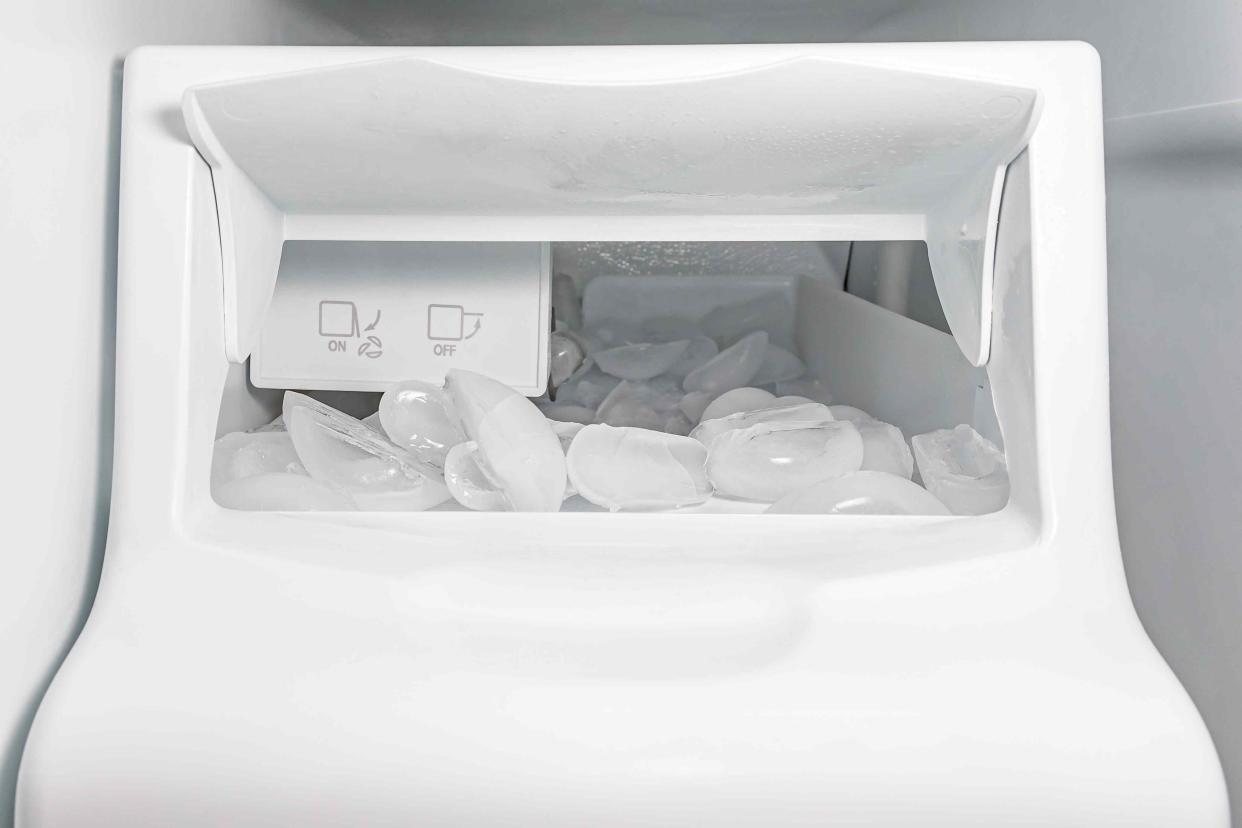How Often Should You Clean Your Ice Maker?

JJ Gouin/Getty
IcemakerAnyone who has owned an ice maker will tell you they need to be cleaned regularly to keep them working properly. Whether it's the quality of the ice or the performance of the machine, it becomes really obvious when you’ve developed a problem. If you’d like to get ahead of the issue and keep your ice maker on a schedule, how often do you need to clean and defrost your unit? What’s the best way to get it spotless without using harsh chemicals? Keeping your ice maker in tip-top shape is the best way to avoid contaminated or gross tasting ice.
It’s recommended that ice makers get cleaned at least twice a year, though if you notice that the ice has a different smell or changes shape or clarity, it’s time to do it again. Other warning signs are low ice production or ice that isn’t fully formed, which indicates a potential problem that can be addressed by cleaning.
Start by Cleaning the Freezer
The first step in cleaning your ice maker is going ahead and getting rid of all of the old ice. While you’re at it, toss all of the expired, frost-bitten items from your freezer as well. Ice can pick up smells from food gone bad and it affects the taste. When in doubt, throw it away.
Get Rid of the Gunk
Lime and mineral deposits build up on the metal plates that freeze ice cubes, causing delays in ice production, stress on the machine, and, eventually, costly repairs and maintenance. Manufacturers typically recommend a product to be used with their particular ice machines to remove any buildup, so consult your owners manual.
Kill the Germs
If you don’t clean out your machine, you may start to notice slime and mold. Germs and bacteria can thrive, even in the cold. No one wants to add dangerous E. coli, salmonella, or listeria to a drink. Sanitizing is an important part of the process. Despite the freezing temperatures, bad bacteria and germs that cause illnesses can contaminate the ice inside of your freezer.
Just like with products that remove scale and lime, there are particular items that are made to kill mold and germs inside of an ice maker. You shouldn’t use bleach, ammonia, or other household cleaners because they might leave chemicals in your ice. This product by Affresh is made for freestanding ice machines, but instructions on their website provide a detailed a step-by-step guide to cleaning any type of ice maker.
Helpful Cleaning Tips
Unplug the freezer while you’re cleaning the ice maker so that new ice is not created made during the process.
Throw out the first couple of cycles of ice to make sure any residue is gone.
Try to change your refrigerator’s filter or any water filters on your unit when you clean your ice maker for the ultimate fresh-tasting ice.
Use a scoop to cut down on the germs. The biggest culprit in dirty ice is hands reaching in to fill up a glass. If you have to reach inside the ice compartment, please wash your hands first!
For more Southern Living news, make sure to sign up for our newsletter!
Read the original article on Southern Living.

